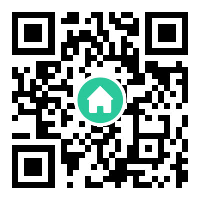In recent years, Telegram crypto groups have emerged as a cornerstone of the digital asset ecosystem. These communities, hosted on the privacy-focused messaging platform Telegram, serve as hubs for traders, developers, and enthusiasts to share insights, promote projects, and navigate the volatile cryptocurrency market. With features like encrypted chats, large member capacities, and bot integrations, Telegram crypto groups have become indispensable for real-time discussions about blockchain innovations, token launches, and market trends. Their rise reflects both the decentralized ethos of cryptocurrency and the growing demand for unfiltered information exchange in a rapidly evolving industry.
Why Telegram Dominates the Crypto Community Landscape
The appeal of Telegram crypto groups lies in the platform’s unique blend of accessibility and anonymity. Unlike mainstream social networks, Telegram allows users to operate under pseudonyms while supporting channels with up to 200,000 members—a critical advantage for global crypto communities. The platform’s “no-ads” policy and resistance to censorship align perfectly with cryptocurrency’s anti-establishment roots. Additionally, Telegram’s API enables automated trading signals, price alerts, and airdrop verification bots, creating a multifunctional space where users can both socialize and execute strategies. From meme coin enthusiasts to DeFi developers, these groups cater to every niche within the crypto universe.
The Double-Edged Sword of Anonymity
While Telegram crypto groups foster open dialogue, their anonymity features also attract bad actors. Pump-and-dump schemes, phishing links disguised as project announcements, and impersonation scams run rampant in unmoderated channels. A 2023 report by Chainalysis revealed that over 30% of crypto fraud cases originated from Telegram-based operations. Despite this, many users tolerate the risks, valuing the platform’s raw, unfiltered market intelligence. Savvy participants often cross-verify information across multiple groups and employ wallet-segregation tactics, illustrating how the community adapts to Telegram’s Wild West environment.
Regulatory Shadows and the Future of Crypto Groups
Governments worldwide are scrutinizing Telegram crypto groups as part of broader crypto market regulations. The SEC’s 2024 crackdown on three Telegram-administered token offerings highlighted jurisdictional challenges, as the platform’s encryption protocols complicate oversight. Meanwhile, Telegram has begun experimenting with blockchain integration, including TON-based payments and NFT verification tools—a move that could further blur the lines between communication platforms and financial ecosystems. While some groups migrate to decentralized alternatives like Discord or Matrix, Telegram’s established user base and robust infrastructure ensure its continued dominance, albeit with growing pressure to implement anti-scam measures.
Conclusion: The Unstoppable Force of Decentralized Dialogue
Telegram crypto groups exemplify the tension between innovation and accountability in Web3. They remain vital for grassroots crypto education and cross-border collaboration, yet their lack of gatekeepers raises persistent security concerns. As the industry matures, these communities will likely evolve toward hybrid models—combining Telegram’s flexibility with third-party KYC checks or reputation systems. Regardless of regulatory headwinds, the demand for real-time, peer-driven crypto discourse guarantees that Telegram crypto groups will stay at the forefront of blockchain culture, shaping market narratives one encrypted message at a time.













